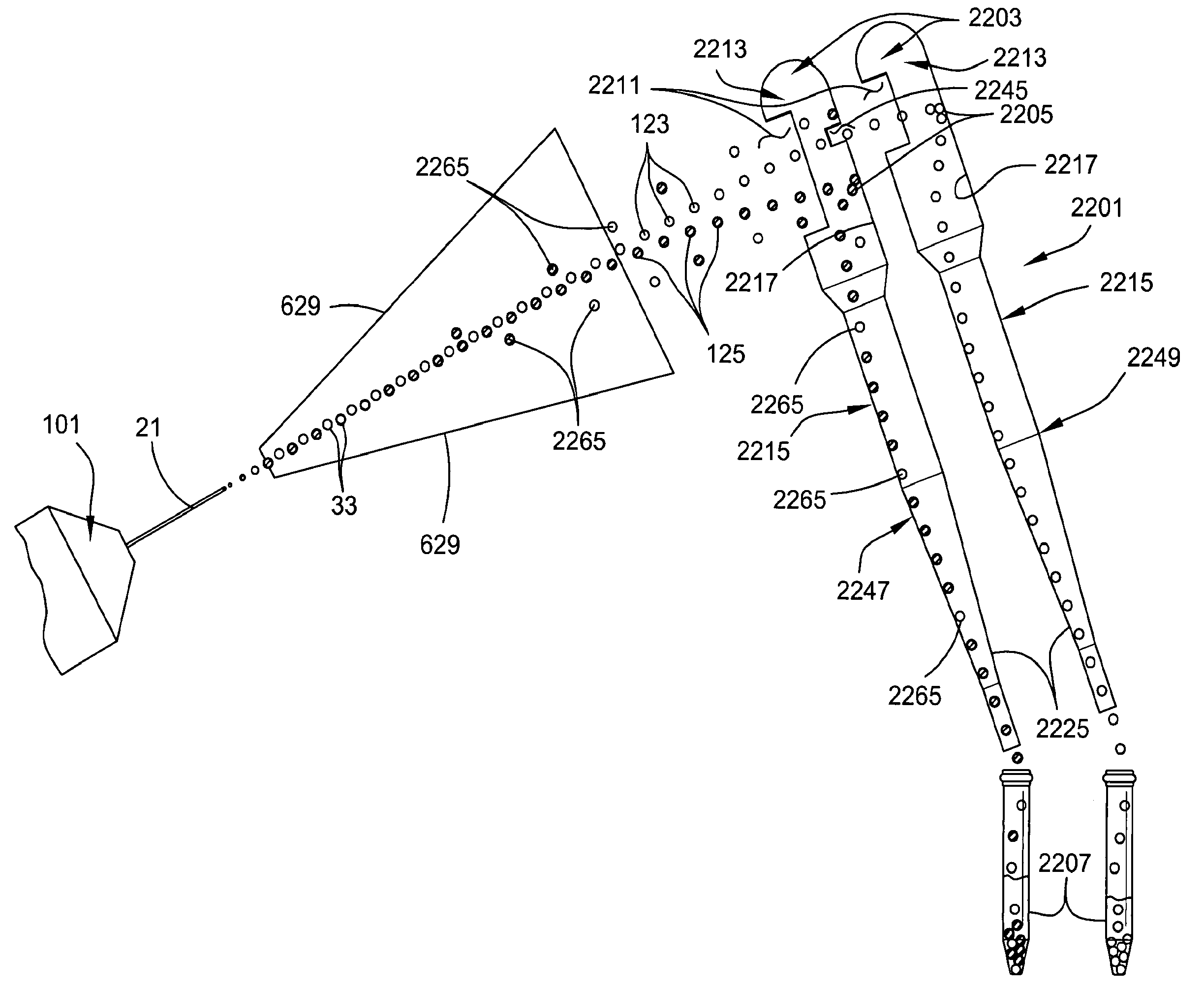Systems for Efficient Staining and Sorting of Populations of Cells
a cell population and cell technology, applied in the field of animal semen collection apparatus and methods, can solve the problems of increasing the cost of the system, limited information can be derived from signals, and existing technology falls short of the inventive technologies described, so as to increase the speed and accuracy of classification, accurate isolate and sort cells, and the effect of motility
- Summary
- Abstract
- Description
- Claims
- Application Information
AI Technical Summary
Benefits of technology
Problems solved by technology
Method used
Image
Examples
example i
Centrifuge Example I
[1059]In centrifuge example I bovine semen was collected and evaluated as described above. The semen sample was diluted with a quantity of Tris-citric acid (“TCA”) having a pH of 7.3 to attain a concentration of 150×106 sperm cells / ml. Spermatozoa were stained with Hoechst 33342 (100 μM) at 41° C. for twenty minutes. Two 15 ml tubes were prepared with buffers for the simulation. Tube 1 was partially filled with 750 μl of phosphate buffered saline (“PBS”) with 10% egg yolk and 14.25 ml PBS with 0.1% bovine serum albumin (“BSA”). Tube 2 was partially filled with 750 ul TCA with 10% egg yolk and 14.25 ml PBS with 0.1% BSA. Each of the two tubes received 100 ul of the solution containing the stained spermatozoa, which were then incubated at room temperature for 20 minutes. The two tubes were then divided into two aliquots of 7 ml each. One aliquot from each tube was centrifuged at 2250 rpm (about 540 g) for 7 minutes in a fixed bucket centrifuge. The other aliquot fr...
example ii
Centrifuge Example II
[1061]In centrifuge example II semen samples from three bulls were collected and evaluated as described above. One of the samples was disqualified for failure to meet initial quality control standards. The other two semen samples were diluted with a quantity of TCA having a pH of 7.3 in order to obtain a sperm concentration of 150×106 sperm / ml. The spermatozoa were stained with a 10 μM Hoechst 33342 solution at 41° C. for twenty minutes. A simulated buffer containing 1500 μl PBS with 10% egg yolk and 28.3 ml PBS with 0.1% BSA was added to each of two tubes. Two hundred μl of the stained spermatozoa (30×106 sperm cells) were added to each tube and incubated at room temperature for twenty minutes. Three 9 ml aliquots of semen mixture were taken from each of the two tubes for centrifugation. One aliquot from each of the two samples was centrifuged for seven minutes in a 15 ml centrifuge tube at each of the following speeds: 550 g; 650 g; and 750 g. The temperature ...
example iii
Centrifuge Example III
[1063]For centrifuge example III, the procedure of centrifuge example II was substantially repeated with the same three bulls on a different day. The results are shown in FIG. 91. The results confirm that there is little difference in the recovery rate at 650 g compared to 750 g.
PUM
| Property | Measurement | Unit |
|---|---|---|
| temperature | aaaaa | aaaaa |
| temperature | aaaaa | aaaaa |
| temperature | aaaaa | aaaaa |
Abstract
Description
Claims
Application Information
 Login to View More
Login to View More - R&D
- Intellectual Property
- Life Sciences
- Materials
- Tech Scout
- Unparalleled Data Quality
- Higher Quality Content
- 60% Fewer Hallucinations
Browse by: Latest US Patents, China's latest patents, Technical Efficacy Thesaurus, Application Domain, Technology Topic, Popular Technical Reports.
© 2025 PatSnap. All rights reserved.Legal|Privacy policy|Modern Slavery Act Transparency Statement|Sitemap|About US| Contact US: help@patsnap.com



